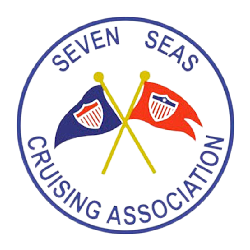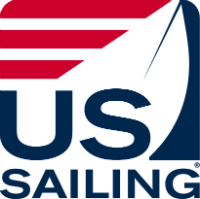For boaters, maintenance can feel like a never-ending battle—scraping barnacles, flushing lines, and pressure washing running gear to keep systems clean and the boat operating smoothly. From clogged seawater lines to marine growth on hulls and propellers, the fight against fouling is time-consuming, frustrating, and costly.
That's why the Waterway Guide team has been closely monitoring two innovative products designed to reduce the maintenance tango: Hull Shield and ElectroStrainer. Both are game-changing solutions for minimizing time in the slings or engine room.
ElectroSea ElectroStrainer: Clean Seawater Lines Made Simple
Waterway Guide Media has been eyeing ElectroSea's technology for the past few years. Proven, cost effective, and built on sound engineering practices, the systems and applications have evolved into significant solutions for one of the most frustrating challenges in boat maintenance.
We all know that marine organisms naturally find their way into every nook and cranny and surface of a boat that sits in the water, and in the lines and strainers of raw water systems. Depending on the salinity, cleanliness, and overall environment, some boat owners clean their strainers every two weeks, and constantly chase blockages and clogged lines. Barnacles, biofilm and other marine growth cause major headaches for yacht owners, choking their raw-water lines used for air conditioning, chillers, refrigeration and hydraulics.
ElectroSea's Electrostrainer converts sea water to a low level of chlorination, less than found in tap drinking water, in which organisms can't survive. As a result, strainers and lines carrying raw seawater remain almost completely clean.
ElectroSea was Founded by Dr. Louis and Daniel Cosentino, a father and son team who were looking to address menacing marine growth in the raw water lines of their sportfisher. "We were experiencing first-hand the need for constant flushing of the seawater system," says Louis. "We thought, there has to be a better way. We applied our background in electrochemical systems, sterilant and filtration technologies and came up with an answer." Daniel says, "In looking back on what we were thinking, we saw it as a superb opportunity. First, we addressed biofouling in the lines, then we started looking at the sea strainer and found that biofouling is, of course, present there as well."
How It Works
A small amount of DC voltage is applied to an electrochlorination cell that contains a mixed metal oxide catalyst. A small amount of the seawater is converted to a low level of chlorinated water and marine life simply does not thrive in that environment.

Brian Golden, VP Research and Development at ElectroSea, summed up how the results were achieved. "Material selection, robust enough for the marine environment, including titanium and composites for strength, and electrically isolated components was the first step. Our technical challenges included making sure we have a way to measure the seawater flow rate. The result is an ultrasonic flow sensor specifically designed for the environment. Another technical challenge involved engineering the flow dynamics of integrating a strainer function with electrochlorination function in one unit." The result was an IBEX innovation award in 2022.
Now proven and accepted by leading manufacturers and installed in new builds and as replacements for typical strainers on vessels worldwide, ElectroSea's systems and components are recognized as extraordinarily designed and engineered.
Mike Ryan, owner of a Nordhavn 59CP (Hull #2) says, "We keep the boat in Charleston, SC, which is a biologically active environment. It was a never ending situation of maintaining sea strainers. There are six AC units onboard, so we put two ElectroSea systems in. I can now go 6 months with zero reduction in raw water flow. We 'chase 80 degrees' from Maine to the Bahamas and are underway constantly. This is our third boat, and I can certainly say that no one should own a boat without ElectroSea's ElectroStrainer."

Hull Shield: Ultrasonic Antifouling for Hulls and Gear
Marine growth on running gear and boat hulls has always been a bane to those of us in salt water. The concept of Hull Shield is that ultrasonic sound will penetrate and travel in the hull of a fiberglass or steel boat and create an environment that marine growth will avoid. And for running gear, the sound travels through the shafts and propellers and down the rudders to perform the same function.
Enough lab work and evaluations have been conducted over the years to warrant good results, supported by many valid success stories. For example, a few years ago, boat owners Bill and Patty Sheridan of Sarasota, FL installed four transducers on their Aquila 36 while cruising America's Great Loop. Reflecting on their experience, Bill shared, "In the first month it struck me that it was keeping growth off the bottom. I wanted to keep crustaceans off the boat. It works for me in my environment. I'm 2,500 miles into the Great Loop, in all kinds of water. I consider the concept sound and effective."
Installation is straightforward for do-it-yourselfers. The kit includes clear instructions, along with adhesive for affixing the two transducers in the appropriate positions. Running the electrical connection is simple, especially when the battery bank is nearby. The system requires only a small amount of 12V current, making it energy efficient. All necessary wiring, diagrams, and battery terminal connection rings are included in the kit. The quick connection cables are well-designed, flexible, and easily routed through tight spaces. Technical support is also available to ensure proper installation, with ongoing improvements to cabling and other features to enhance the system setup.

The third-generation HD systems represent significant advancements in ultrasonic antifouling technology. These systems are versatile and can be used for a wide range of applications, including hulls, drives, exterior brackets, struts, stabilizers, trim-tabs, and swim platforms.
Their HD series products feature:
- Lower peak current requirements.
- Increased efficiency, delivering nearly double the power directly to the transducers.
- Twice as many ultrasound bursts in targeted frequency ranges.
- Enhanced circuitry with advanced fault protection.
- A unified controller system that can manage both hull and drive applications simultaneously.
- An external auxiliary indicator wire for system status monitoring, which can be integrated into a central panel or helm switch.
- The HD100 system also features a NEMA waterproof enclosure, making it suitable for harsher or less protected areas of the boat.
Note: HD systems are designed for 12V battery systems but can be adapted for 24V systems with a DC/DC converter, such as the Victron Orion IP20 24/12 25A converter, which is readily available.
Upgrade Now for a Hassle-Free 2025 Boating Season
Now is the perfect time to install these systems and reduce maintenance headaches for the 2025 boating season. Both ElectroStrainer and Hull Shield offer innovative solutions that save time, lower costs, and keep your boat operating at its best. Invest in these innovative solutions this winter and spend more time cruising and less time cleaning. These technologies are changing the game for boaters everywhere.












